- Kia ora
- Return to work under Alert Level 3
- SH1 north of Ōtaki – new road layout
- Getting to know our bridges
- Ngā wai o Ōtaki
- Wetlands at PP2Ō
- Upcoming construction milestones
 Kia ora
Kia ora
Welcome to the August edition of the PP2Ō Expressway construction update – Express Connect. As this newsletter was about to go out informing you of some significant milestones achieved on the project this month, the government announced the nationwide Level 4 lockdown.
Consequently, we had to shut down construction pretty quick and at this stage we don’t really know how long this will be for. Although this put a pause on the good progress we had been making, we support the decision to ”go hard and go early” and protect the community, our staff and their whanau. I hope you and your loved ones are staying safe and healthy.
We were still able to celebrate some milestones before lockdown hit. This month, we celebrated the opening of the southbound lane of the temporary State Highway 1 (SH1) diversion at the northern end of the project, while our crews continue to work on the Expressway’s Northern Tie-In. We understand that this may cause disruption for residents in the area so will do everything we can to keep everyone updated and minimise any impact this may have on your journeys.
The much-anticipated opening of the shared path between Te Hapua and Te Kowhai Roads, scheduled for the end of August, will now need to wait until the level 4 lockdown is over. Rest assured, it will be finished as soon as we are allowed back on site. We appreciate the understanding of the community in these times.
Once finished, the new PP2Ō Expressway will provide a four-lane expressway of the highest standard from Peka Peka to Ōtaki, making it easier to move people and freight between Wellington and the North. It will be a fantastic asset for residents and visitors driving through the Kāpiti Coast, and we can’t wait for you to be able to experience it.
If you need any further information on the PP2Ō Expressway project, please call us on 0800 PP2O INFO or email pp2o@nzta.govt.nz
Ngā mihi,
Chris Hunt, Project Director
Return to work under Alert Level 3
As the Wellington region moves to Alert Level 3 at 11:59pm on Tuesday, 31 August, our construction workers will be allowed to work on site again from Wednesday. We anticipate that it will be a staggered start back with higher priority activities commencing first, and it will take some time to implement the necessary precautions before transition to a full work force again.
We will ensure that our worksites remain safe at all times for our staff and the community, and appropriate traffic management measures will be in place if required.
As you’ll be aware, there are still very strict restrictions at Level 3, and we would like to take this opportunity to reassure the community that we will be following strict protocols outlined in the Project COVID-19 Level 3 Risk Management Plan to ensure the safety of our people and the community. This includes a COVID-19 Response Plan for any suspected COVID-19 cases in our workforce. We’ll have compulsory ‘track and trace’ procedures employed on site, and visitors will be restricted to essential workers ONLY.
We kindly ask for the help of the community to keep our staff and others safe during works at Level 3. To ensure social distancing, please do not approach our workers unless it is an emergency. Any questions or concerns can be directed to our hotline number or email below as our administrative support will continue to work remotely.
SH1 north of Ōtaki – new road layout
In early August the PP2Ō project team successfully moved southbound traffic onto a temporary section of road just north of Ōtaki. Please take extra care while everyone gets used to the new road layout and keep to the temporary speed limits in the area – this will help the new surface to embed properly.
Northbound traffic will be switched onto the new alignment once works in the middle are safely completed – this work is currently paused during lockdown. Once we can get back on site and all traffic has been switched, the project team will start focusing on the Expressway tie-in works at the northern end.
Thank you for your ongoing patience while these important project works take place.
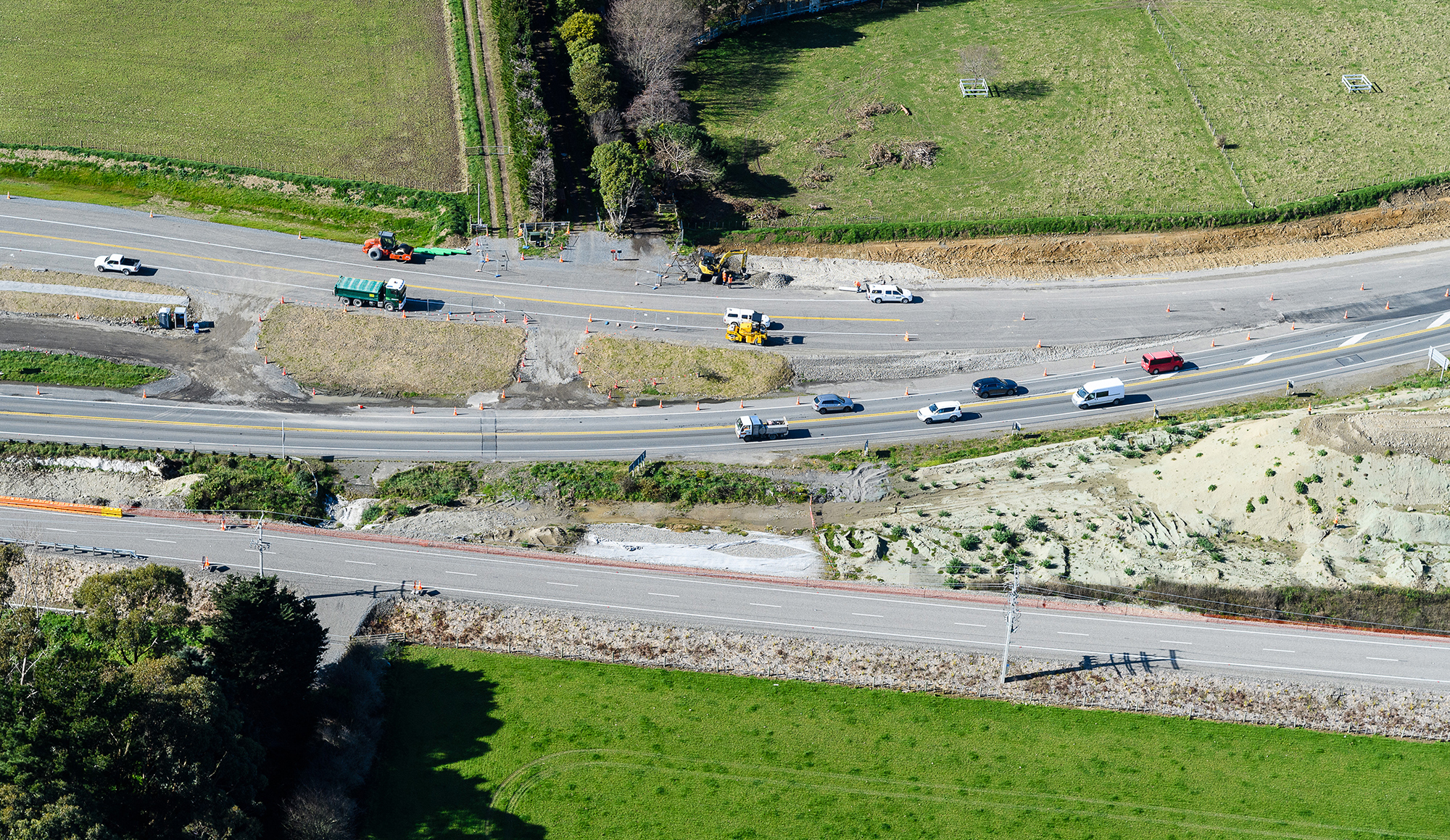
The new SH1 diversion at the northern end of the project.
Getting to know our bridges
Works are progressing well on the Makahuri Rail Overpass, or Bridge 9 as some of you may know it. Just before lockdown was announced, we were preparing the deck and western backwall to be ready to pour 180m3 of concrete. This included tying steel reinforcement and placing formwork. The steel reinforcement gives the concrete extra strength to carry the traffic loading and the ties prevent the steel from becoming displaced when the concrete is poured. The formwork acts as a mould for the poured concrete and ensures the concrete gains its strength and durability in the desired shape. Bridge 9 is our only ‘Hollow core concrete bridge’. The other bridges in the PP2Ō project are either ‘steel bridges’ or ‘Super T concrete bridges’. When this work is finished, we will be able to have our construction vehicles driving over Bridge 9, which means our crew will be able to drive the full length of the expressway alignment without having to use the local roads and State Highway 1.
Fletcher’s Foreman Daniel Hall says this is a significant milestone for the project, helped along by some quality colleagues.
“The people on the project are a great team to work with, and they definitely make our job easier.”
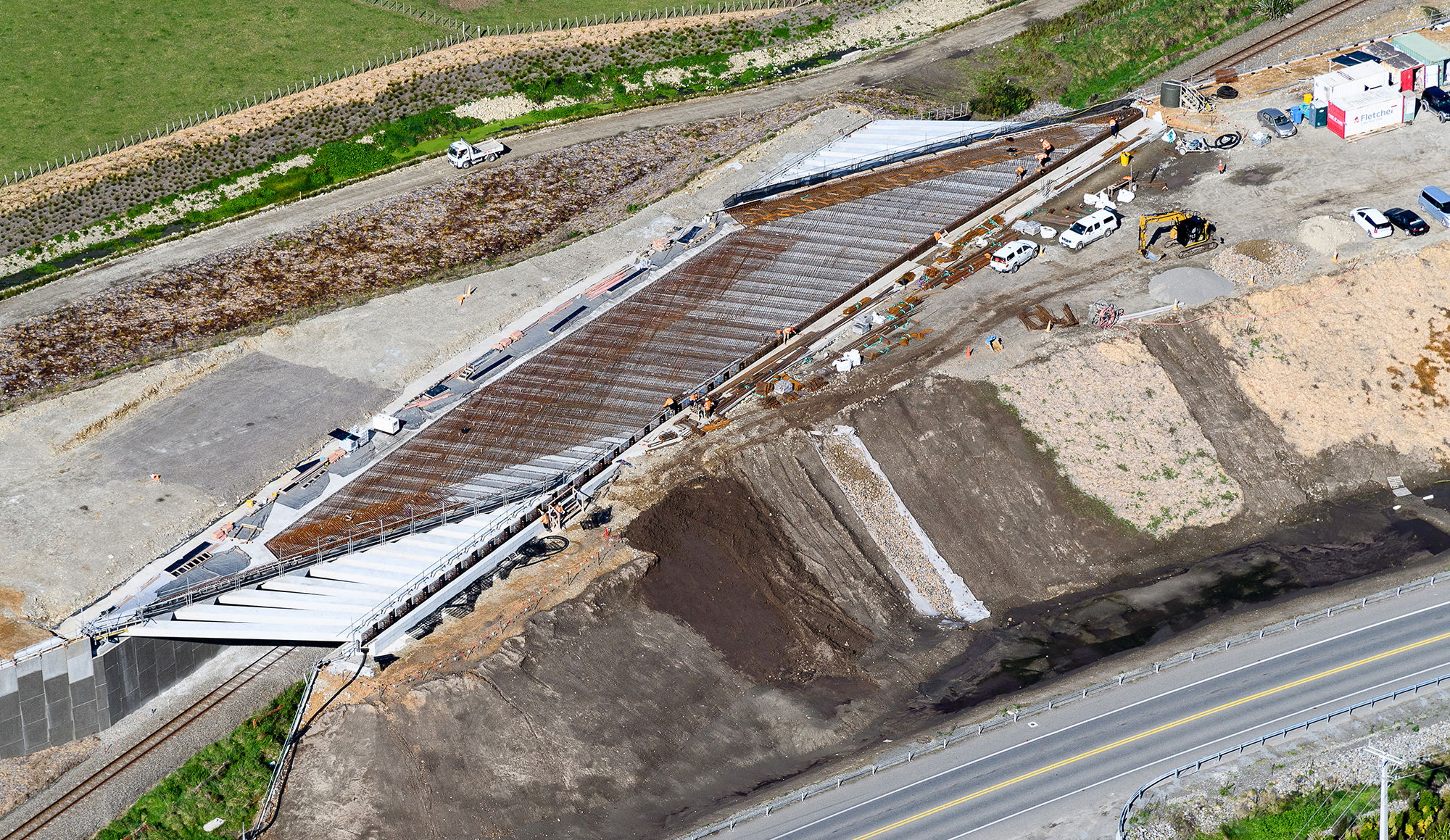
Construction on the Makahuri Rail Overpass is well underway.
Ngā wai o Ōtaki
 Bridge 2 is located at the northern end of Ōtaki, just prior to the roundabout by BP and adjacent to Pare-o-Matangi Reserve. The artwork on both sides of the bridge captures Te Taiao, the natural world. On the eastern side sits Te Manuao, the world of birds, and on the western side, Ngā wai o Ōtaki (the waters of Ōtaki).
Bridge 2 is located at the northern end of Ōtaki, just prior to the roundabout by BP and adjacent to Pare-o-Matangi Reserve. The artwork on both sides of the bridge captures Te Taiao, the natural world. On the eastern side sits Te Manuao, the world of birds, and on the western side, Ngā wai o Ōtaki (the waters of Ōtaki).
‘Ngā wai o Ōtaki’ is representative of the waterways within the rohe (tribal boundary). The Ōtaki River is depicted in the top lines, with the Waitohu, Mangapouri and Mangaone streams being represented by the flowing lines and the small koru patterns representing puna (springs). The centre piece is Tangaroa (God of the Sea) where the waterways meet. Traditionally, the Mangapouri, as it is now commonly known, had many names along its various points. From east of the new expressway it was Te Awahōhonu, then down to Te Ngae where it joined Haruātai, and then further west to Mangapouri.
In one Māori creation story, wai (water) originated from the pain and separation of Ranginui (sky father) and Papatūānuku (earth mother) from the tears (rain) of Ranginui and the sighs (mist) of Papatūānuku upon their parting. Water is believed to hold its own mauri (life force) and wairua (soul) and is therefore considered a life essence. It supports life for traditional food sources for Ngati Raukawa, such as tuna, crabs, and trout. It is also used in ceremonies such as Tohi (which is similar to a baptism), Whakawatea (a cleansing ceremony for people struggling with hinengaro or mental health issues) and Whakahoro (a ceremony to remove tapu).
In its natural state, water is referred to as wai ora (healthy water), whether it is wai-māori (fresh water) or wai-tai (salt water). Water becomes ‘wai-mate’ (dead water) when there is an unnatural mixing of water sources (and therefore mauri), or if it is boiled. In this state, the water is considered to have lost its mauri, which can only be restored by Papatūānuku. Wai-mate is considered dangerous to people when it has been processed through human contact. For example, water used for washing people or clothes wouldn’t be used in the same receptacle as water used for food preparation, and water used for healing or rituals is carefully disposed of.
Ngā wai o Ōtaki start their journey at Te Tuarātapu-o-Te Rangihaeata (the Tararua Ranges), before making their own pathway through the region, to reconnect with Tangaroa (God of the Sea) in the Tasman Sea. While we see the waters of Ōtaki as seperate entities, they have the same source and the same destination. The same can be said of Ngā Hapū o Ōtaki. While each hapu carves out their own self-determined pathways, they begin and end with the same mauri.
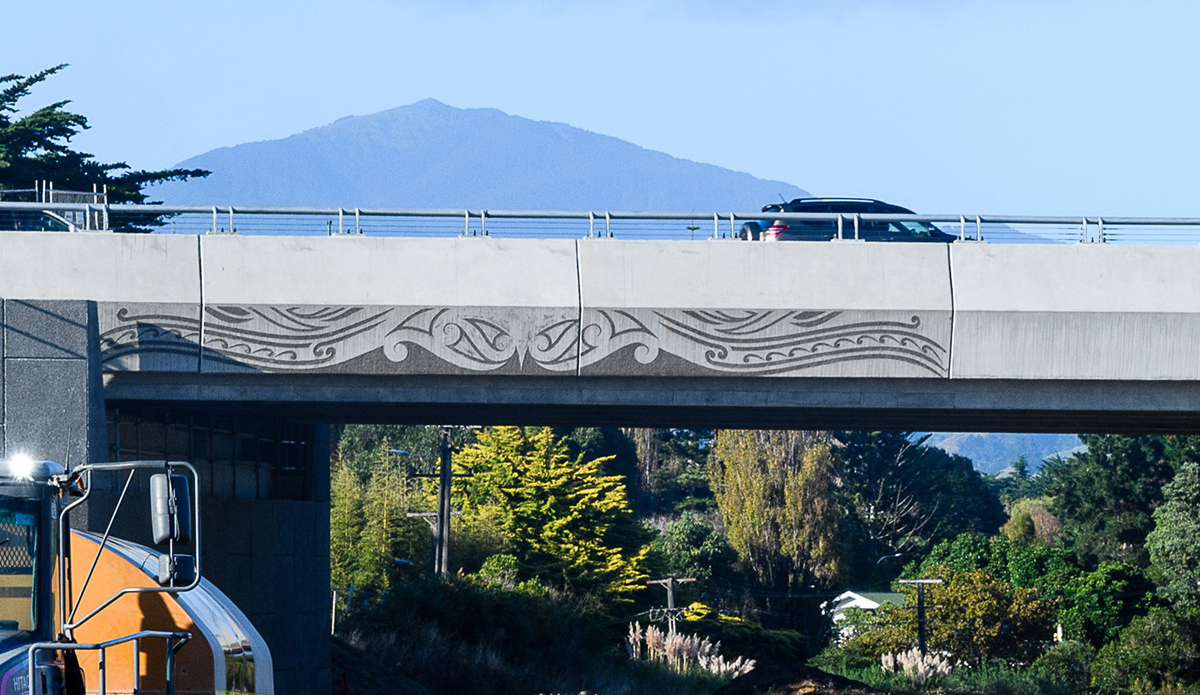
The artwork on both sides of bridge 2 represents Te Taiao – the natural world.
Wetlands at PP2Ō
Why are wetlands so important for the environment?
Wetlands slow down floodwaters by acting like giant shallow pans. Water flowing into these pans loses speed and spreads out, reducing the impacts of flooding as the wetlands absorb the heavy rain and then releasing the water gradually. Plants in the wetland play an important role in holding back the water. You could say that wetlands act like the kidneys of the earth, cleaning the water that flows into them. They trap sediment and soils, filter out nutrients and remove contaminants.
At the PP2Ō project we are very proud that we are constructing six new wetlands along the Expressway, as well as enhancing the existing Makahuri Wetland as part of the ecological mitigation across the project. There is a lot of planning that goes into the process of creating new wetlands. For instance, we might need to dig out the existing soil to produce the new basins, which need to have the right level of topsoil before we can start the planting stage. At the moment, we’re still in the construction phase of the project, which makes it easier for our landscaping team to monitor the planting when they’re on site. Wetland monitoring is a constant and long-term activity and will need to continue for at least five years to make sure the wetlands are functioning as they are supposed to. These are incredible assets for our environment, which will provide many ecological and landscape benefits alongside the expressway.
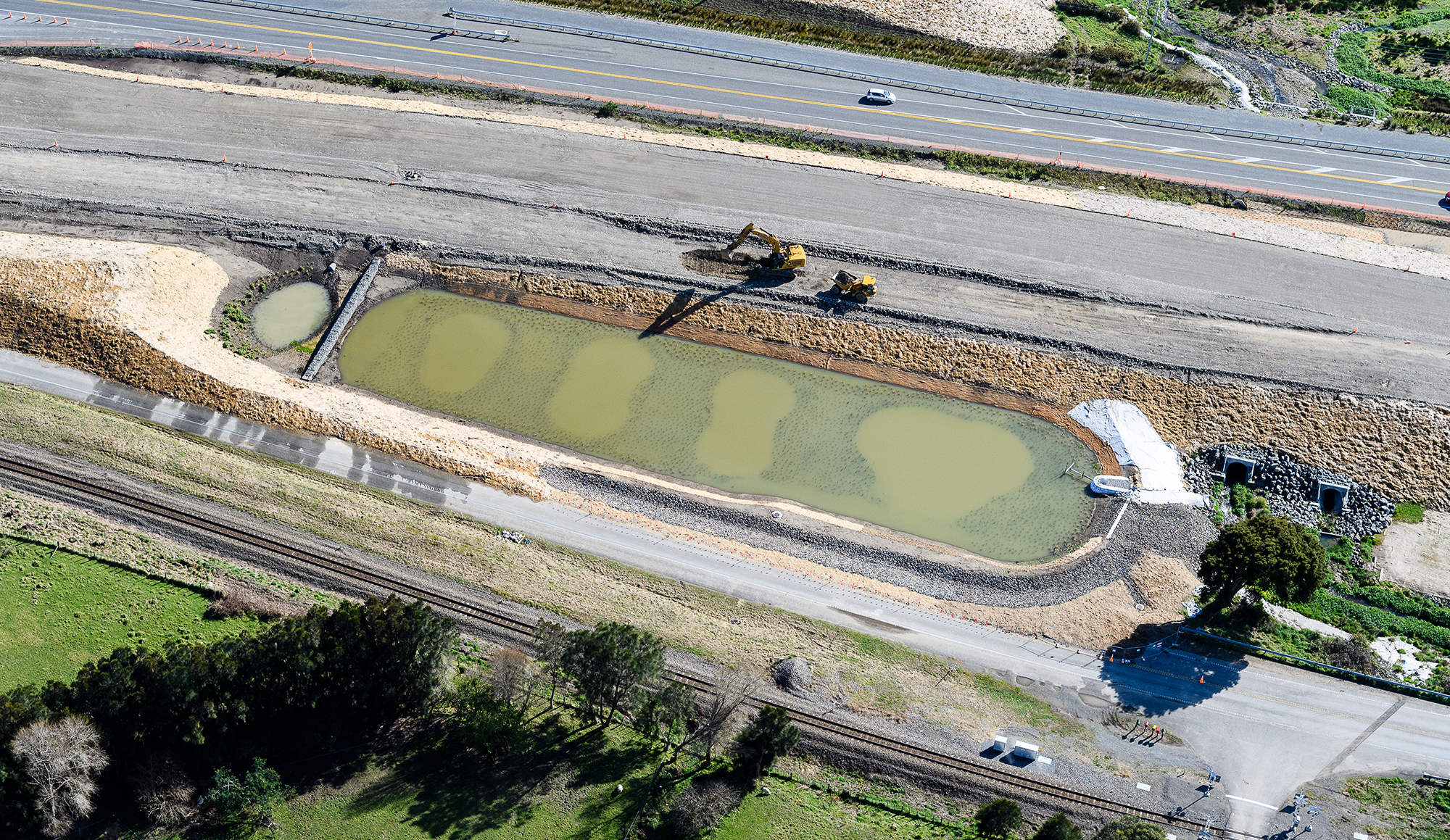
Wetlands are a critical part of the project.
Upcoming construction milestones (subject to changing alert levels)
Northern area update
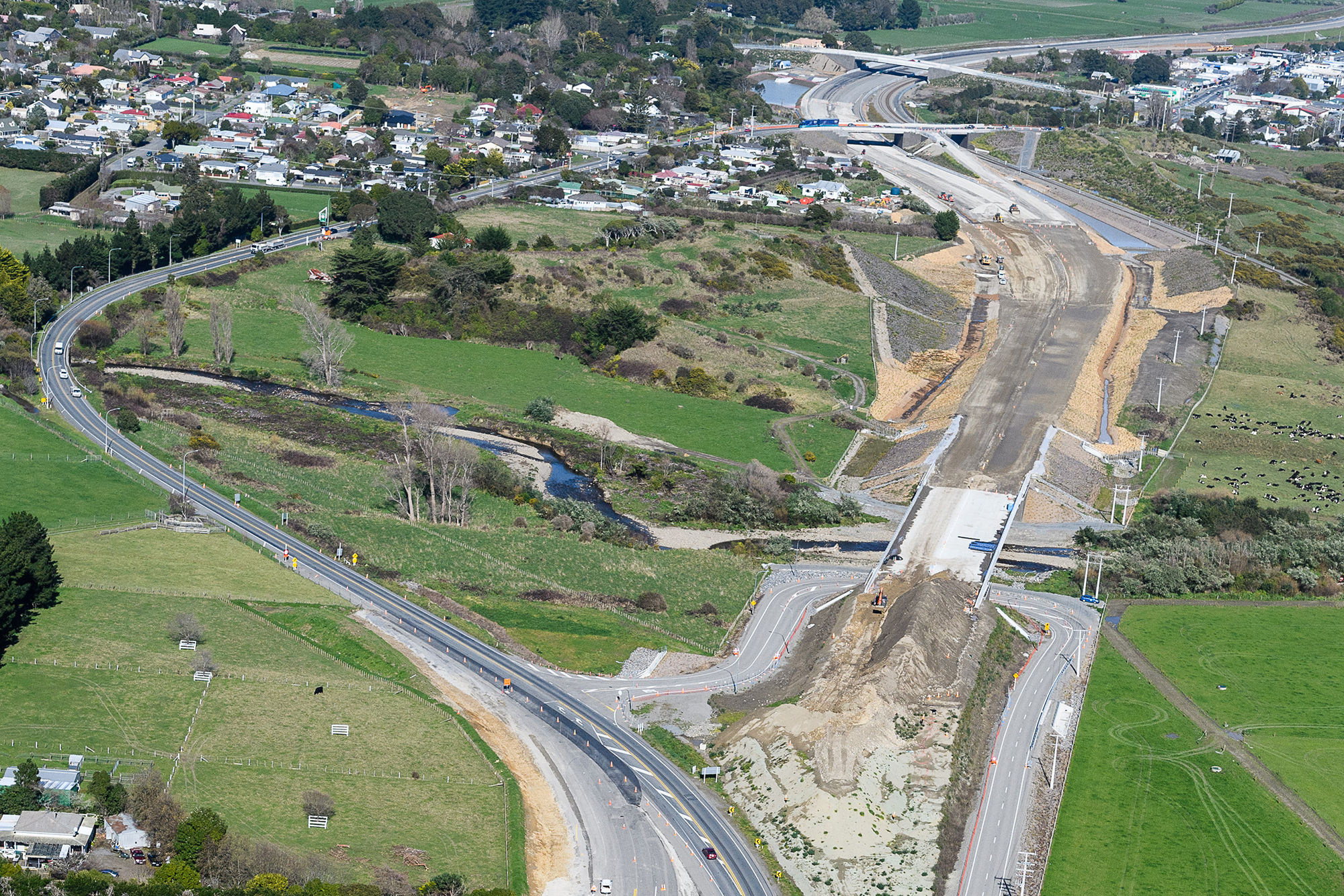
Looking south over the new SH1 diversion and entrance to Taylors Road.
With the southbound SH1 traffic switch in place, excavation and pavement works will be carried out within the barriered central area at the northern tie-in. Stabilised subbase works will continue up towards Bridge 1 (Waitohu Bridge) area.
Central area update
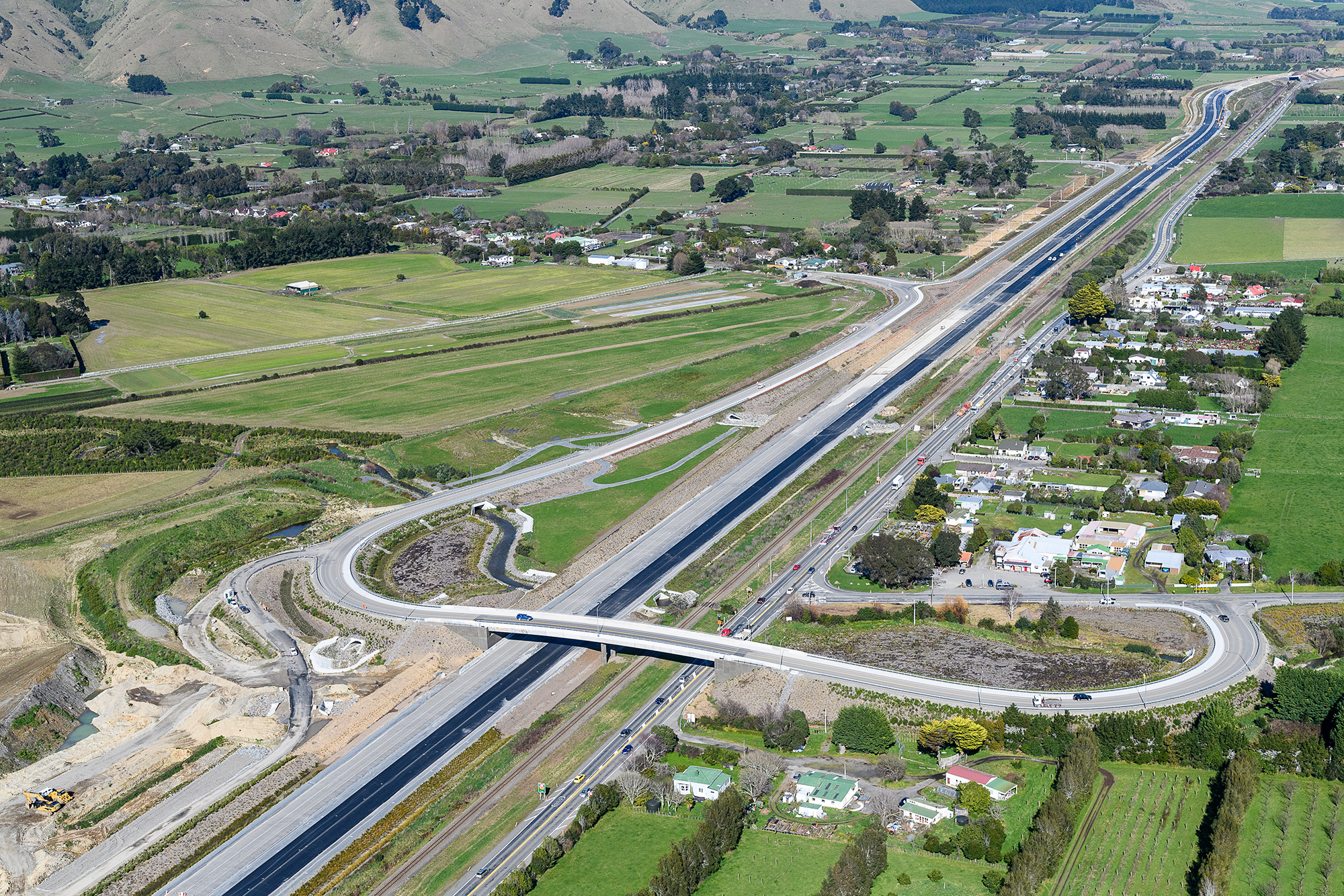
Te Horo overbridge offers a fantastic view of the expressway.
In this area, we are currently laying asphalt, completing shoulder works and commencing wire rope barrier installation between Ōtaki Gorge Road and the Makahuri Rail Overpass (Bridge 9).
Southern area update
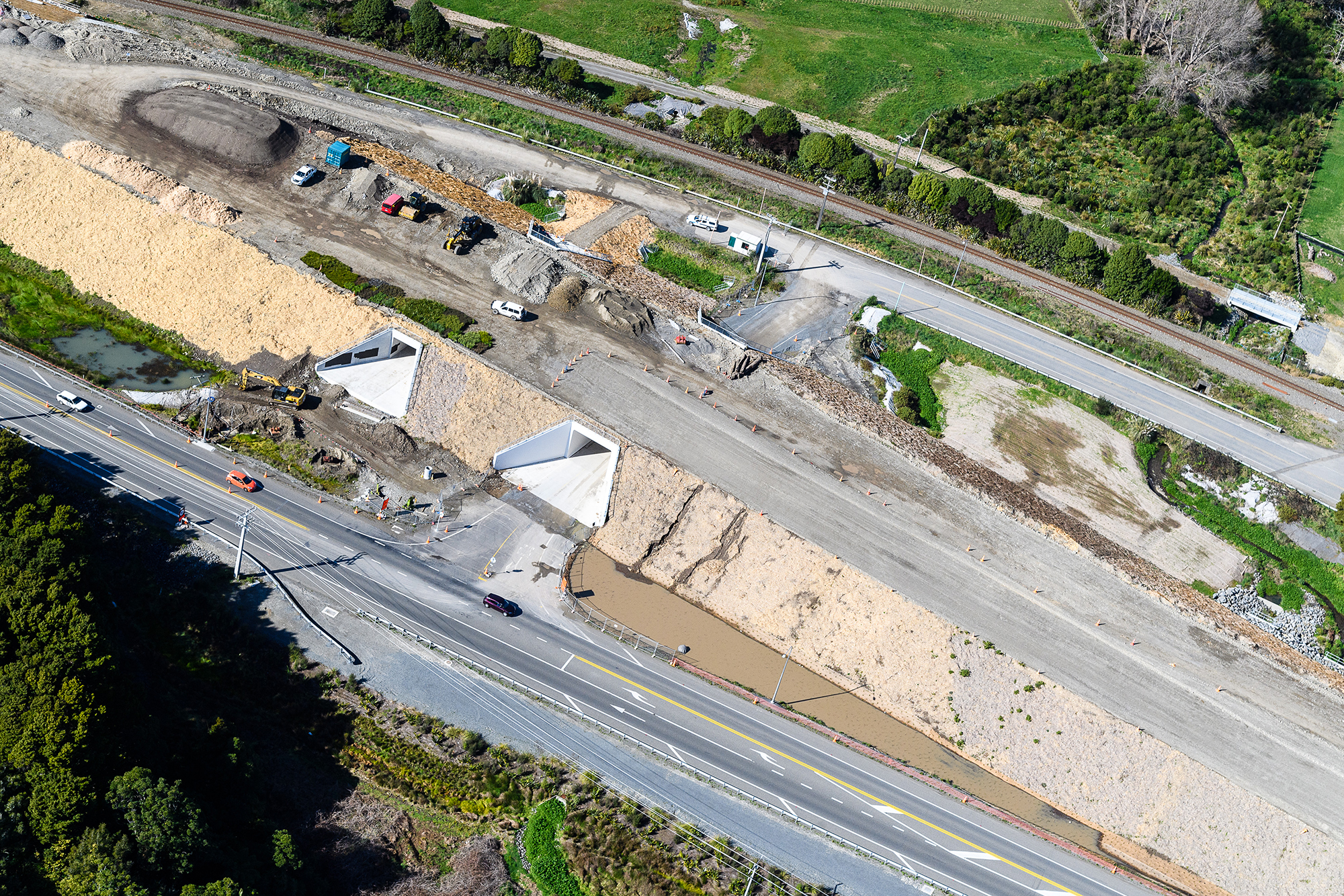
A bird’s-eye view of the underpasses south of Makahuri.
Before lockdown, we were getting ready for the second and final concrete pour to the Makahuri Rail Overpass. At the same time we were planning to start construction of the side barriers to the bridge. Final earthworks trimming and subbase construction are planned to continue all through the southern area followed by the laying of asphalt.